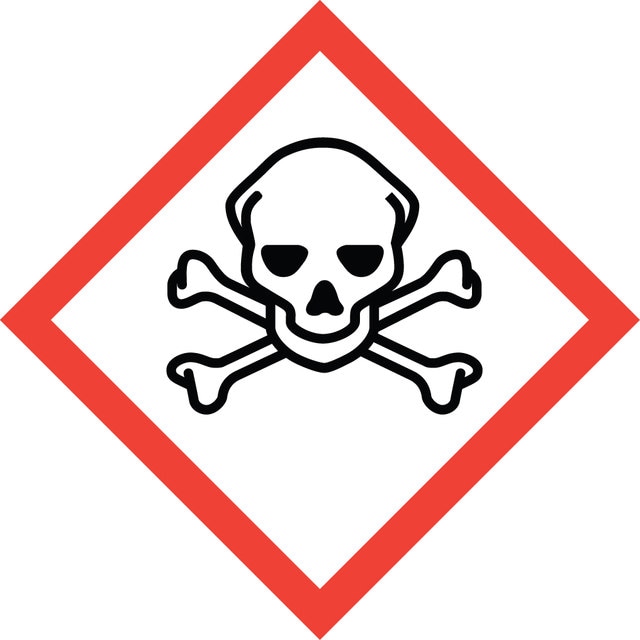153419
2,6-Dichlorophenylhydrazine hydrochloride
98%
Sign Into View Organizational & Contract Pricing
Select a Size
About This Item
Linear Formula:
Cl2C6H3NHNH2 · HCl
CAS Number:
Molecular Weight:
213.49
EC Number:
MDL number:
UNSPSC Code:
12352100
PubChem Substance ID:
NACRES:
NA.22
Assay
98%
form
powder
mp
225 °C (dec.) (lit.)
functional group
chloro
hydrazine
SMILES string
Cl.NNc1c(Cl)cccc1Cl
InChI
1S/C6H6Cl2N2.ClH/c7-4-2-1-3-5(8)6(4)10-9;/h1-3,10H,9H2;1H
InChI key
CQNIYLLTIOPFCJ-UHFFFAOYSA-N
Application
2,6-Dichlorophenylhydrazine hydrochloride was used in the preparation of 1-(2,6-dichlorophenyl)-4-methyl-5-(4-methoxyphenyl)-1H-pyrazole-3-carboxylic acid, ethyl ester.
Signal Word
Danger
Hazard Statements
Precautionary Statements
Hazard Classifications
Acute Tox. 3 Oral - Acute Tox. 4 Dermal - Acute Tox. 4 Inhalation - Eye Irrit. 2 - Skin Irrit. 2 - STOT SE 3
Target Organs
Respiratory system
Storage Class Code
6.1C - Combustible acute toxic Cat.3 / toxic compounds or compounds which causing chronic effects
WGK
WGK 3
Flash Point(F)
Not applicable
Flash Point(C)
Not applicable
Personal Protective Equipment
dust mask type N95 (US), Eyeshields, Gloves
Regulatory Information
新产品
This item has
Choose from one of the most recent versions:
Already Own This Product?
Find documentation for the products that you have recently purchased in the Document Library.
Sean R Donohue et al.
Bioorganic & medicinal chemistry, 14(11), 3712-3720 (2006-02-10)
Cannabinoid type-1 (CB(1)) receptor ligands, derived from the 1,5-diarylpyrazole core template of rimonabant (Acomplia), have been the focus of several studies aimed at examining structure-activity relationships (SARs). The purpose of this study was to design and synthesize a set of
Our team of scientists has experience in all areas of research including Life Science, Material Science, Chemical Synthesis, Chromatography, Analytical and many others.
Contact Technical Service